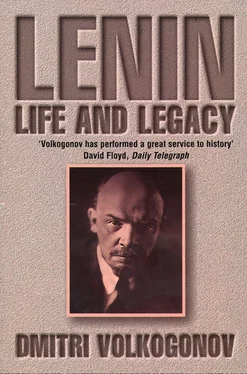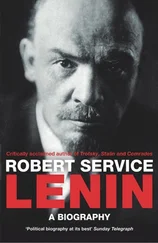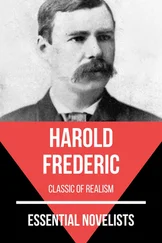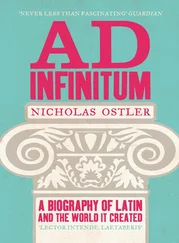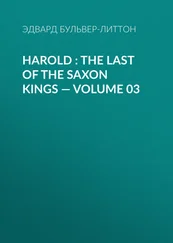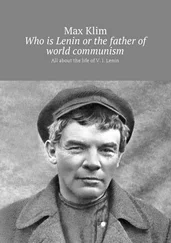DMITRI VOLKOGONOV
Translated and edited by Harold Shukman
HarperCollins Publishers 1 London Bridge Street London SE1 9GF
First published in Great Britain by
HarperCollins Publishers 1994
Copyright © Dmitri Volkogonov 1994
Translation copyright © Harold Shukman 1994
The Author asserts the moral right to be identified as the author of this work
All rights reserved under International and Pan-American Copyright Conventions. By payment of the required fees, you have been granted the nonexclusive, nontransferable right to access and read the text of this e-book on-screen. No part of this text may be reproduced, transmitted, downloaded, decompiled, reverse engineered, or stored in or introduced into any information storage and retrieval system, in any form or by any means, whether electronic or mechanical, now known or hereinafter invented, without the express written permission of HarperCollins e-books.
Source ISBN: 9780007291649
Ebook Edition © OCTOBER 2012 ISBN 9780007392674
Version: 2016-03-21
HarperCollinsPublishers has made every reasonable effort to ensure that any picture content and written content in this ebook has been included or removed in accordance with the contractual and technological constraints in operation at the time of publication.
Cover
Title Page
Copyright
Map
List of Abbreviations
Chronological Table
Editor’s Preface
Introduction
1 Distant Sources
Genealogy
Vladimir and Alexander
The Forerunners
The Discovery of Marxism
Nadezhda Krupskaya
Inessa Armand
Financial Secrets
2 Master of the Order
Theorist of Revolution
The Phenomenon of Bolshevism
Lenin and the Mensheviks
The Paradox of Plekhanov
The Tragedy of Martov
3 The Scar of October
Democratic February
Parvus, Ganetsky and the ‘German Key’
Lenin and Kerensky
The July Rehearsal
October and the ‘Conspiracy of Equals’
Commissars and the Constituent Assembly
4 Priests of Terror
The Anatomy of Brest-Litovsk
White Raiments
Regicide
Fanya Kaplan’s Shot
The Guillotine of Terror
5 Lenin’s Entourage
The Most Capable Man in the Central Committee
The Man with Unlimited Power
The Bolshevik Tandem
The Party’s Favourite
The Leninist Politburo
6 The One-Dimensional Society
The Deceived Vanguard
Peasant Predators
The Tragedy of the Intelligentsia
Lenin and the Church
The Prophet of Comintern
7 The Mausoleum of Leninism
The Regime and the Illness
The Long Agony
The Mummy and the Embalming of Ideas
The Inheritance and the Heirs
Lenin as History
Postscript: Defeat in Victory
Keep Reading
Index
About the Author
Notes
About the Publisher
| AMB |
Archives of the Ministry of Security |
| AMBRF |
Archives of the Ministry of Security of the Russian Federation |
| APRF |
Archives of the President of the Russian Federation |
| ECCI |
Executive Committee of the Communist International |
| GARF |
State Archives of the Russian Federation |
| GPU |
State Political Administration |
| KGB |
Committee of State Security |
| NKGB |
People’s Commissariat of State Security |
| NKVD |
People’s Commissariat of the Interior |
| OGPU |
Combined State Political Administration |
| PSS |
V.I. Lenin, Polnoe sobranie sochinenii (Complete Works), 5th edition, 55 vols., Moscow, 1970–85 |
| RTsKhIDNI |
Russian Centre for the Preservation and Study of Recent Historical Documentation |
| TsAKGB |
Central KGB Archives |
| TsAMBRF |
Central Interior Ministry Archives of the Russian Federation |
| TsAMO |
Central Archives of the Ministry of Defence |
| TsGALI |
Central State Archives of Literature and Art |
| TsGASA |
Central State Archives of the Soviet Army |
| TsGoA |
Central State Special Archive |
| TsGVIA |
Central State Military History Archives |
| TsIK |
Central Executive Committee |
| TsKhSD |
Centre for the Preservation of Contemporary Documentation |
| VTsIK |
All-Russian Central Executive Committee |
Until February 1918 dates in Russia conformed to the Julian or Old Style Calendar, which by the twentieth century was lagging thirteen days behind the Gregorian Western Calendar, or New Style. Thus, the February Revolution of 1917 took place in March according to the Western calendar and the Bolsheviks seized power on 25 October 1917, when in the West the date was 7 November. In the text we have used New Style dates, adding Old Style where any ambiguity might arise. In the following table, all dates are according to New Style.

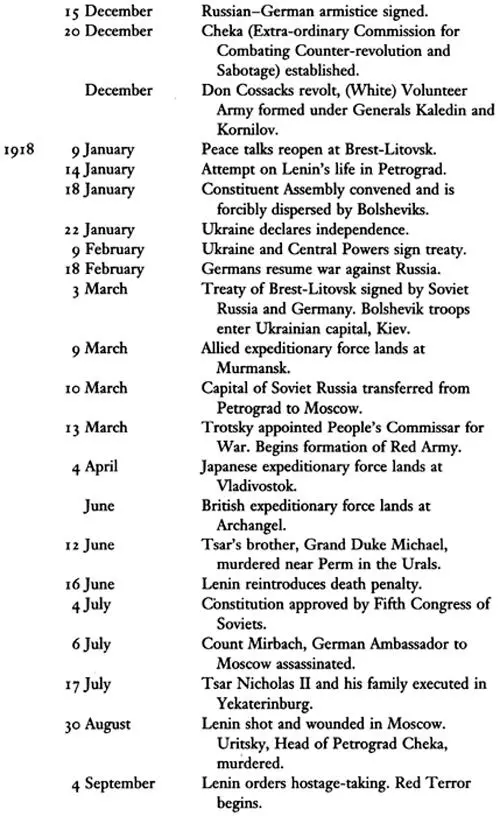
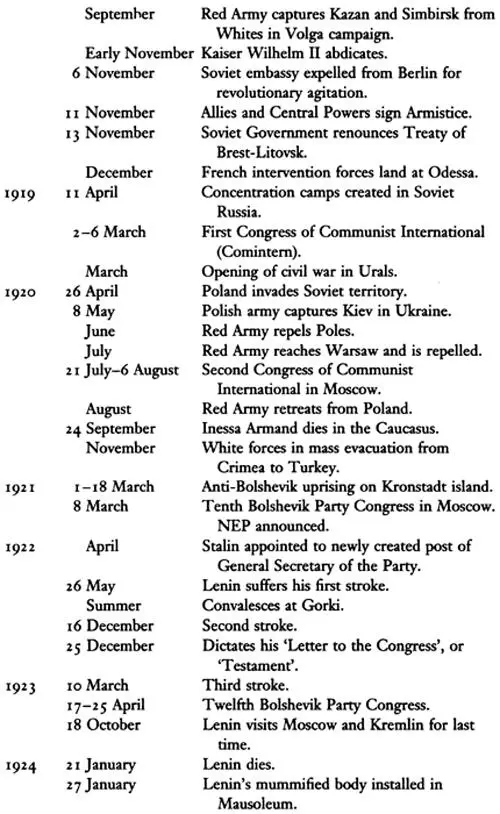
With the demise of the Soviet Union an era of Russian history was closed. It was an era that began in 1917 with the seizure of power by the Bolshevik Communist Party and ended with the disgrace and eviction of the same Party in August 1991, followed by the formal termination of the Soviet state itself at the end of the same year. From its inception to its end the Soviet state was identified with Lenin, whether alive or dead. Without him, it is generally accepted, there would have been no October revolution. Following the revolution, his name, his image, his words and his philosophy embellished, informed, exhorted and inspired generations of ordinary Soviet citizens, and especially those raised to positions of authority. He was made into an icon, a totem of ideological purity and guidance beyond questioning. All other Party leaders were found to be fallible in due course, many of the 1917 cohort in the great purge of 1936–38, and most famously Stalin in 1956 when Khrushchev debunked his ‘cult of personality’ at the Twentieth Party Congress. But Lenin remained untouched. As more and more topics of Soviet history were re-examined during Gorbachev’s enlightened leadership, and the Bolshevik old guard, exterminated in the 1930s, were rehabilitated, it became obvious that the spotlight must sooner or later fall on the last dark place on the stage – that occupied by Lenin.
A new reading of Lenin was made possible not only because Dmitri Volkogonov was granted access to the archives in the 1980s, but also, indeed chiefly, because Leninism itself had totally collapsed in the former Soviet Union. As the author of this book himself confesses, even after he had spent years collecting the incriminating evidence for his major study of Stalin, mostly written before 1985 and published in 1988, Lenin was the ‘last bastion’ in his mind to fall. Lenin has at last passed into history. No longer is he the prop of a powerful regime, the object of an ideology, or the central myth of a political culture. To engage in debate about Lenin and to assess his actions is no longer to challenge the legitimacy of an existing political system. Like him, it too has become history.
Читать дальше
